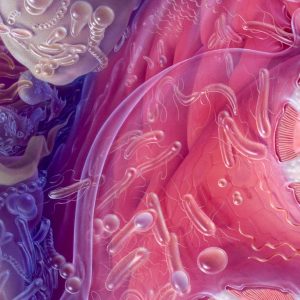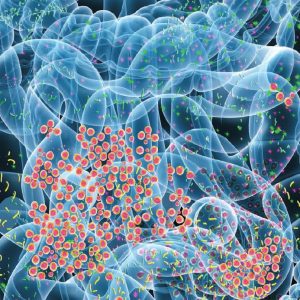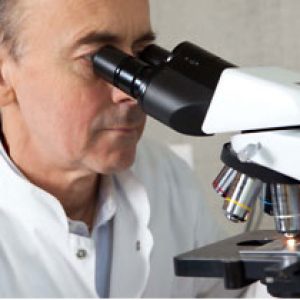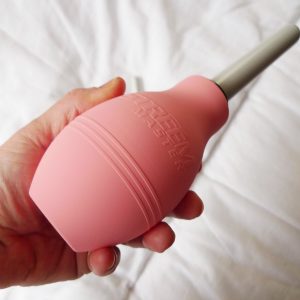Today the term “dysbiosis” scaring children and adults with TV screens and the pages of magazines, it is a lot of writing on the Internet. In fact, such a diagnosis in medicine does not exist, only microbiological concept, but not the disease.
Microbial flora unique to each child, and microbes colonize only the intestines, but also the oropharynx, mucous membranes of the genitals, the skin, and are in constant dynamic balance.
Under the influence of external factors and changes inside the body, the ratio of microbes is changing, as the child grows and dietary habits change and the composition of the intestinal flora. Therefore, the overgrowth as a serious problem, and to be more precise, the consequences of disturbed microbial balance can only speak in children with dramatically weakened immune system, taking long-term antibiotics or cytostatics, and some other categories.
Especially it is impossible to justify the dysbiosis, skin rashes, intestinal disorders, problems of appetite or bloating. Goiter is not the cause of these problems, and their consequence, germs along with their boss also suffer from allergies, discomfort and enzyme deficiency.
However, today it has become fashionable to examine children on a dysbacteriosis, and then based on test results, prescribe treatment, 99% unjustified and useless. Let’s see how significant and really needs analyses on a dysbacteriosis, how to put such a diagnosis and who is actually need?
When the diagnosis of “dysbiosis” is not justified?
Often, the diagnosis “dysbacteriosis” exhibit in General no tests, only on the basis of the reasoning of the physician, backed by the complaints of parents and guidance on “suspicious” symptoms. These include bloating and flatulence, stool with streaks of green, white lumps or flakes undigested milk, anxiety and crying. Complement this “diagnosis” rash on the face and body, skin peeling or dryness. And if the parents indicate that they changed the formula or took antibiotics – “diagnosis” becomes almost 100%.

Meanwhile, these symptoms did not belong neither goiter nor even to the so-called “antibiotic associated diarrhea” which is the dysbiosis recognize the Western colleagues prolonged treatment with antibiotics.
All these symptoms – Allergy or colic, functional immaturity of the digestive tract and enzymes, which are typical for an early age. They exist in children long before the fashion for “dysbiosis”, but no one in the last century did not treat their different pre – and probiotics, as well as drugs that affect the microbial flora.
Coprogram and stool cultures.
One of the most objective tests reflecting the digestive system and the degree of digestion and assimilation of food, is the stool test, called a coprogram. In this sighting microbes are not examined, but along with all the other indicators, determine iodophilic flora and pathogenic. If these indicators are positive, often there are symptoms of intestinal distress, violations of digestion, and perhaps even signs of intestinal infection, and in this situation, you need treatment. But this treatment of pathogenic, potentially dangerous for a child of flora, not the effect on all microbes of the intestine as a whole.
The second objective analysis, which can show intestinal is stool cultures. It is the definition of pathogenic microbes, which in healthy children should not be (Salmonella, pathogenic strains of Escherichia coli, Shigella – dysentery and some more). If in the absence of pathogens greatly increased the number of conditionally pathogenic microbes, it also can be a dangerous symptom. Amid such a situation, even relatively harmless germs the baby can give the clinic of intestinal infection with diarrhea, vomiting and dehydration. In some cases, it may be shown preventive treatment, against the exorbitant concentrations.
But what about the study of “dysbiosis”, which for a fee, offer to conduct a lab or sends the doctor if there are certain problems and complaints?
Cal “dysbiosis”: what can it show?
One of the popular methods of research is the analysis of a feces on a dysbacteriosis. It is collected from children ranging from the neonatal period, resulting in natural evacuation. In the feces that get into the sterile vial, examine the level of useful, opportunistic and pathogenic bacteria, giving results on the form with the numbers reflecting the degree of seeding of certain pathogens.

According to this analysis it is proposed to treat the child with different drugs, up to antibiotics, in parallel with sowing the gut various germs of the drugs in the drops, solutions or capsules. But in reality it can show the analysis and how will it benefit? Along with the above described sowing feces with detection of pathogenic germs, this analysis can also detect infection of the intestine (if it’s pathogenic form, which in the intestine should not be) or latent carriers (e.g., Shigella or Salmonella), which is dangerous for the crumbs and for others.
Otherwise, it will show the ratio of the normal microbial flora and those conditionally-pathogenic microbes that coexist in the gut. A single such analysis, without any speakers may not reflect an objective picture of bowel problems, we are mindful of the fact that the microbial landscape of the intestine is very dynamic.
Maybe the baby ate any products that affect the growth of Klebsiella at the same time reduces the growth of bifidoflora. But after 4-5 hours, when the food pass through the intestines, the situation will change.
Show any real problems, this analysis can not, it reflects the individual microbial flora.
In addition, the analysis reflects more than just leaving the end of the large intestine, where digestion actually already is not carried out, and in the higher departments of the composition of the microbial landscape can be quite different, without any mixture of microbes from the skin and anus. If to carry out a similar analysis to that of the material sampled in the upper parts of the colon that can only be obtained at colonoscopy, which the children like this spend is just unreasonable.
Of course, this analysis is not useless at all, if it expresses sudden and radical deviations from the norm, that would bother the doctor, especially if we are talking about the beneficial lactic acid bacteria and bifidobacteria. Dangerous and the presence of pathogenic representatives. But with the opportunistic flora of the intestine, as well as all the other locations is much more complicated. Their activity largely depends on the characteristics of the organism of the baby and its immune system. Reliability analysis is very questionable, and the more his conduct is not a reason for radical treatment.
Other diagnostic methods of dysbiosis of the child
Modern laboratories engaged in experimental research, are developing new methods of diagnostics of dysbiosis. Today there are methods that can more adequately and accurately assess the problems of the microbial landscape of the intestine. But they are difficult to implement and roads, ordinary the laboratory, they can not perform and diagnosis they are not yet applicable.

These methods include:
- The Express-method of determination in the supernatants of faecal proteolytic activity of certain enzymes.
- electrophoresis on paper a high-voltage current with a definition of certain markers (determined not less than five connections)
- identification of ion chromatography in the faeces composition of special acids – gall and carbon and biogenic amines with aromatic compounds.
- identification by gas-liquid chromatography of volatile fatty acids.
Additionally, there is a further and microscopy of fecal smears with the identification of certain types of microbes.
Today the problem of diagnostics is acute, it is important to understand that the result of a single analysis, even with severe disabilities should not become the reason for the treatment. Important changes in combination with evaluation of all clinical symptoms. Such a state is by exclusion of all other pathologies. And to explain to them all the children’s problems generally can not!



